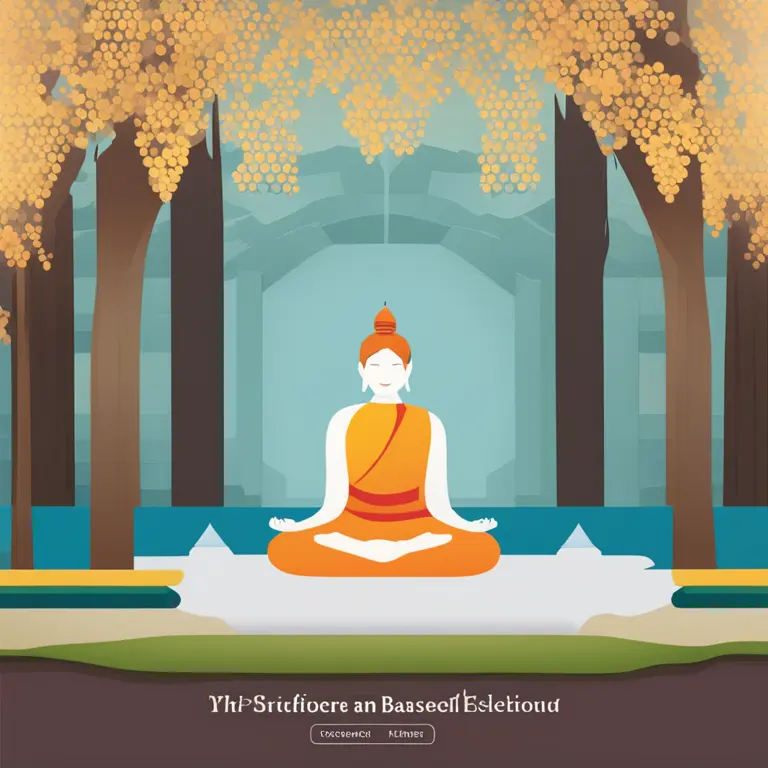
Discover Best Meditation Practices for Easing Anxiety
Discover effective meditation techniques to calm anxiety and promote mental well-being in this insightful guide.
article by Hina Kurosawa
Introduction to Anxiety Alleviation
Anxiety is a common companion in the fast-paced environment of our modern world. For many, the quest for tranquility leads to the ancient practice of meditation. Meditation, with its various forms and approaches, enters the limelight as a powerful ally in managing stress and anxiety. In this article, we will delve into the most effective meditation techniques that have shown promise in bringing peace to a restless mind.

Mindfulness Meditation: Present Moment Focus
Among various meditation styles, Mindfulness Meditation stands out for its simplicity and immediate applicability. By anchoring one's attention to the breath, or sensations in the body, practitioners learn to observe their thoughts without judgment. This practice encourages a state of awareness and presence, crucial for disrupting the cycle of anxious thoughts. Recent studies continue to support the efficacy of mindfulness in reducing anxiety symptoms, making it a go-to recommendation in therapeutic settings as of 2024.

Guided Visualization: Journey to Serenity
Guided Visualization is another potent method for alleviating anxiety. It involves following a spoken narrative that leads one's imagination to tranquil and comforting scenes. The vivid sensory experiences provided by this technique can act as a mental escape, offering temporary relief from anxiety. With an increase in the availability of digital platforms offering guided meditation sessions, this approach has gained significant popularity for its convenience and ease of practice.

Mantra Meditation: Sound Vibrations
The ancient practice of reciting mantras—repetitive sounds, words, or phrases—has found relevance in the modern battle against anxiety. The repetitive nature of the mantra can help the mind focus and detract from distressing thoughts. Scientific research has begun to explore how the vibrational quality of mantras might influence neural pathways, providing a neurological basis for its calming effects. Although intoned mantras are traditionally associated with Eastern spiritual practices, their accessibility has become universal.

Yoga Nidra: Restful Awareness
Yoga Nidra, or yogic sleep, is a form of meditation that promotes deep relaxation while maintaining consciousness. Participants lay down in a comfortable position and are guided through a body scan that facilitates physical and mental soothing. The practice has become more accessible due to virtual classes and applications that cater to the growing demand for at-home wellness activities. In 2024, Yoga Nidra continues to be evidence-backed in its potential to reduce anxiety and enhance overall sleep quality.
Breathwork: Controlling the Life Force
Controlled breathing, or pranayama in yogic tradition, has emerged as a central element of many meditation practices. By consciously altering breath patterns, one can directly impact the autonomic nervous system, which is often dysregulated in anxiety disorders. Techniques like the 4-7-8 method, where breaths are timed in a specific pattern, can quickly induce a state of calm. Pranayama has not only been adopted by meditation enthusiasts but is also frequently included in psychological therapies for its immediate calming effects.
Published: 1/14/2024
Modified: 1/15/2024
More predictions
Come back here soon to learn more about yourself and your future


Mindfulness Meditation: A Handbook for High Schoolers
Discover how mindfulness meditation can benefit high school students, enhancing focus, reducing stress, and promoting overall well-being.


Easing Loneliness with Meditation
Discover how mindfulness meditation can provide solace and connection to mitigate feelings of loneliness, enhancing emotional and mental well-being.


Harmonizing Life with Meditation Mantras
Delve into the transformative power of meditation mantras to align mind, body, and spirit for a harmonious existence.